Wednesday, February 29, 2012
Update: Carver's Vise
We have several new ideas on the drawing board here at Benchcrafted, but the one that has been the focus of our attention lately has been the La Forge Royale Carver's Vise.
We've been working out the details for this vise since last October. We're still a few weeks away from the first production run, but here are a few details we can share.
We'll be offering this vise in various configurations (none of which we can guarantee):
1. Metal components only. You provide the wood and build the vise. So start looking for some nice 12/4 stock now. This would be the perfect project for that odd chunk you've had laying around waiting for the right project. Got any big lignum vitae offcuts?
2. Metal components and enough wood to build one vise. Right now we're looking into sourcing some 12/4 stock for the vise. We have a lead on some beech that would work perfectly.
3. A limited run of complete vises, ready to go out of the box, and sequentially numbered. This won't happen for a while, but if it does, they will be special. We're thinking sinker logs of Honduran Mahogany. Don't hold your breath.
Here are some details on the components. All parts will be made from carbon steel, with an oiled black oxide finish. This is the best way to get the hand-forged look without having to rob a bank. The only off the shelf parts will be the wood screws used to fasten the brackets to the wood, and four square nuts. All other parts we're machining from scratch. We're going to use a mix of quick, rudimentary fabrication methods to suggest the hand forged look, along with CNC to keep the cost down and precision where its needed.
These vises were widely used all over Europe (and especially France) before WWII. And for more than just carving.
Here's three men working with their vises, carving parts for furniture. c. 1931
And here's another gentleman working with his carver's vise. This is at L'Ecole Boulle. c. 1912
For more clever uses of this vise, take a look at these videos, both very interesting.
http://www.ina.fr/economie-et-societe/vie-economique/video/VDD09005638/les-ecoles-nationales-professionnelles.fr.html
http://www.ina.fr/economie-et-societe/education-et-enseignement/video/VDD10045545/la-fabrication-d-un-siege-a-l-ecole-boulle.fr.html
Saturday, February 25, 2012
English Dovetails and a New Blog
English craftsman David Barron sent us an email a bit ago announcing his new blog, which you can see here.
David uses a Glide Leg Vise in his joinery bench, and in the video above to demonstrate his method for cutting through dovetails (which is simply fantastic in our opinion, especially for beginners). Our favorite moment is right at the 7:00 mark where he gives the wheel a little flick (chisel in hand no less!) to close the vise.
Make sure you check out the lovely tools David is making, here.
Tuesday, February 21, 2012
Jefferson Cases-Done
Last night I finished up the final, smallest case to top off my set of Thomas Jefferson book boxes.
This has been the largest single dovetailing project I've ever done. Well over 120 individual joints. All were cut by hand using the Lie-Nielsen thin plate dovetail saw. I'll say one thing. "Cut nail" joinery is looking mighty attractive right now.
Material is steamed beech, with three coats of Minwax Antique Oil. All surfaces are hand planed, followed up with paper to smooth the ends of the pins and tails.
The backs of the cases are 1/2" beech, with a beaded shiplap, just like in the article. I fastened the backs with clout nails. I imagine this case will be around for several hundred years.
I made a few changes to the design on the cases. First, on the base (plinth) I designed a cyma reversa with fillet profile instead of using the profile from Chris' cases. I thought the base needed a little beefing up, and this profile seemed to fit a little better to my eye. Next, I changed the dimensions of the cases slightly. The bottom case is the largest, with the case above a tad shorter. The rest of the cases are all from the plans. Thirdly, I changed the depth of the cases for two reason: to better fit the books I have, and so I could layout the dovetails so the spacing is consistent from case to case. I think this helps to unify the look of the piece, while still keeping the separate "book box" theme.
Here's what I like about this project.
1. The cases are all the same. Same layout, same marking gauge settings. I could get setup to build one, and then finish the rest without mental effort.
2. The 48" wide cases work well for wide uninterrupted spans. And this works because each shelf is in effect 1-1/2" thick, especially when the cases are assembled and screwed together from underneath each "shelf" pair. Couple this with the solid back nailed to the back of each horizontal member and you end up with a very rigid structure.
3. The cases do not dominate the shop. I milled all the wood for the entire project in one shot, then stickered it in the corner of the shop as I built each box one at a time. First I built the plinth and lowest case, finished it, took it in the house, and then moved onto the next box. I never had more than one box taking up shop space at a time.
4. Our Moxon vise was indispensable for this project. There are a few commercial versions of the Moxon vise available on the market now. And I've used a few of them, including a couple shop-made versions. I am absoltely spoiled on the handwheels. Their mass and virtually friction-free movement meant I could focus entirely on precision sawing. Frustrating workholding really disrupts my concentration. The Moxon has been wonderful.
Here are some more pics of the piece, in my office.
Friday, February 3, 2012
For Follansbee
Hey Peter, you want racing stripes? You got 'em!
Oh, (and I promise to never do this again) I shot this a few weeks ago out the kitchen window:
Oh, (and I promise to never do this again) I shot this a few weeks ago out the kitchen window:
Wednesday, February 1, 2012
Winter Smoother - Tote Shaping
After returning from Brese Plane a couple weeks ago the Winter Smoother sat on the bookshelf in my office for over a week while I caught up from time away.
Then it happened. Sunday afternoon. The eternal day. That magical time when working in the shop seems so right. It's unlike any other day.
I slung my camera bag over my shoulder, grabbed the tripod, and headed to the shop, Winter Smoother and tote in hand. I dusted off the bench, hit play on my Zune, and started making rosewood dust...
Then it happened. Sunday afternoon. The eternal day. That magical time when working in the shop seems so right. It's unlike any other day.
I slung my camera bag over my shoulder, grabbed the tripod, and headed to the shop, Winter Smoother and tote in hand. I dusted off the bench, hit play on my Zune, and started making rosewood dust...
Subscribe to:
Posts (Atom)
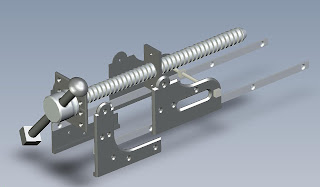



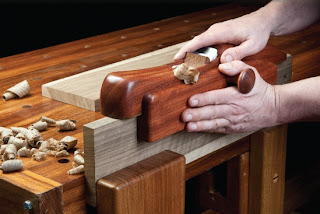
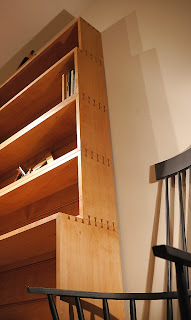
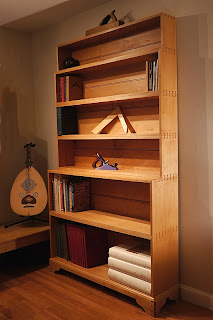


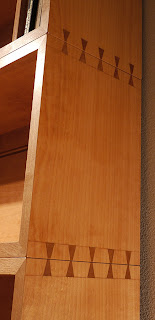
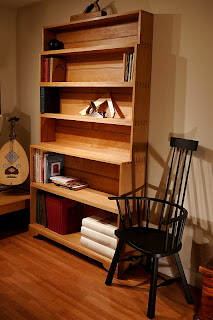
 Made in the U.S.A.
Made in the U.S.A.